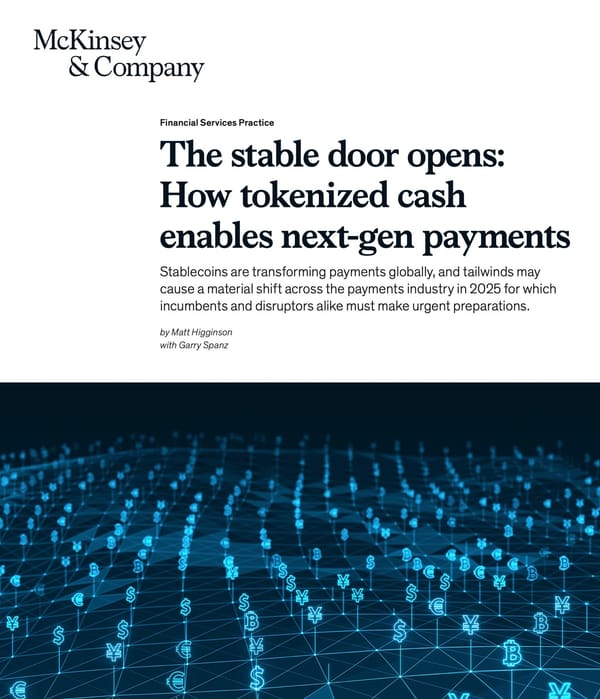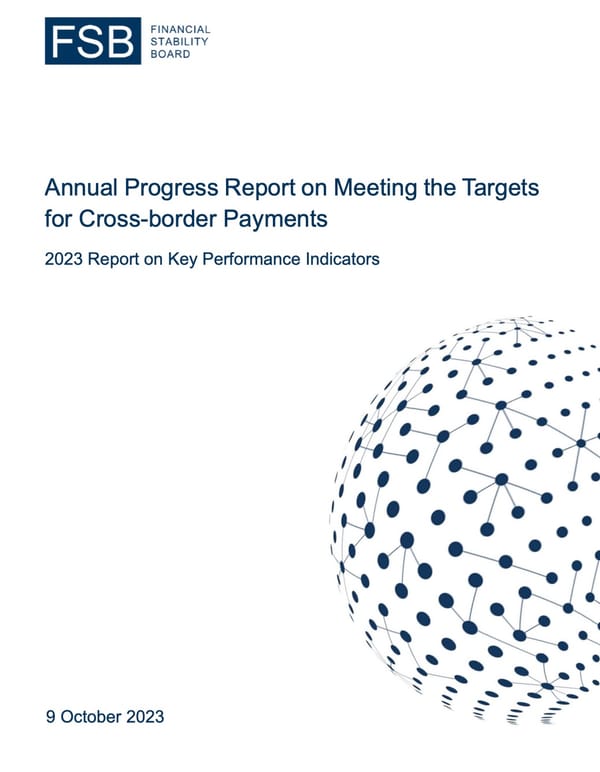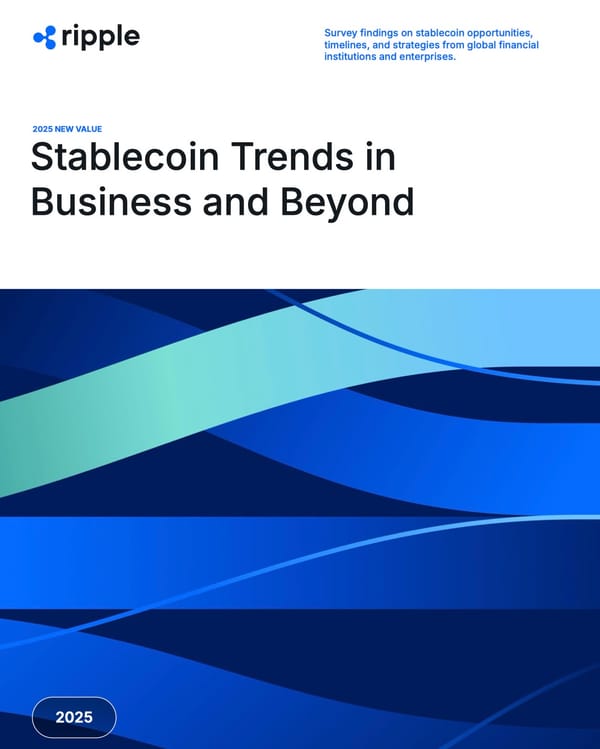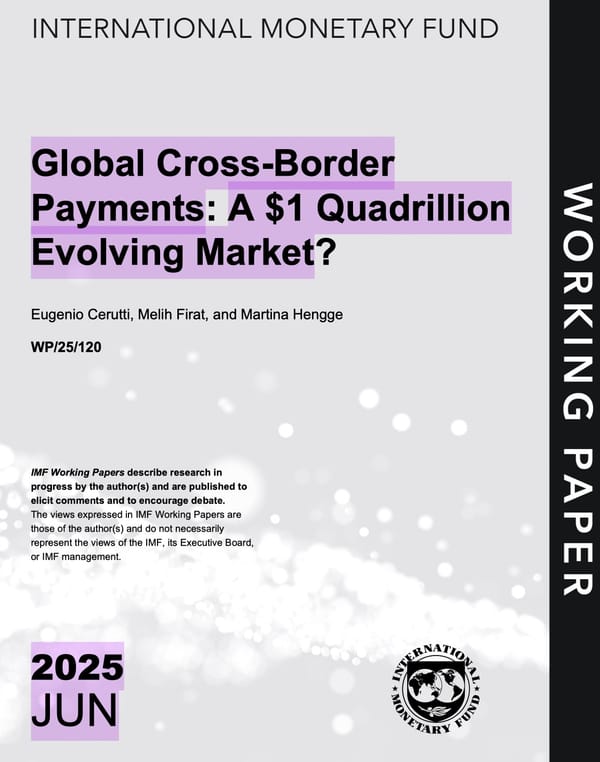In baseball, as in cross-border payments, it’s not just speed—it’s getting it to the right hands.
Part 1 of 3 — Rethinking global payments beyond the hype
“Stablecoins currently offer limited benefits.”
That was one of the headlines from the World Economic Forum’s Digital Currency Governance Consortium report I co-authored in 2021. At the time, it reflected a sober conclusion: stablecoins were fast in theory, but still disconnected from real-world payment flows. Four years later, the market is asking the opposite question: have stablecoins finally become the holy grail of cross-border payments?
The short answer: stablecoins have made meaningful progress—structurally, technically, and institutionally—but they still solve only half of the problem. They teleport dollars across blockchains, but they don’t yet fix where liquidity needs to be and when in real-world commerce. That remains the hard part.
The stablecoin boom is real — but context matters
The adoption curve has been dramatic. In 2021, total stablecoin supply hovered around $20 billion. By 2025, supply exceeded $312 billion (Coingecko, Oct-25) and annual transfer volumes surpassed $27 trillion (McKinsey, 2025). Some networks now settle more value in a year than Visa and Mastercard combined (Dune/Artemis, 2025). Even major institutions now use stablecoins daily—from Visa and PayPal, to fintech money transmitters and regional banks integrating USDC or USDT into settlement workflows (Ripple, 2025).
But context matters. The global payments market processes close to $1 quadrillion a year (IMF, 2025). Against that scale, stablecoin flows still represent well below 1% of total value moved globally. And most of those flows are still tied to crypto trading rather than commerce, trade, or treasury payments (McKinsey, 2025).
So yes—growth is real, but maturity is uneven. The industry has moved from concept to usage, but not yet to full economic relevance.
What has changed since 2021
Three breakthroughs explain why stablecoins moved from speculative side-show to foundational rails:
1. Reserve quality and transparency
In 2021, reserve backing was opaque, unaudited, and often riskier than disclosed. Today, leading issuers maintain bankruptcy-remote structures, high-quality reserves, and independent attestations (McKinsey, 2025). Financial credibility has caught up with technical capability.
2. Institutional-grade custody and wallets
Early adoption was limited by risk: private keys were lost, funds were hacked, and user experience was unforgiving. That has changed. Policy-based custody, multisig, MPC wallets, and on-chain surveillance tools enable safe institutional use.
3. Uptime, speed, and cost
Stablecoin transfers are nearly instant across major L1/L2 networks. Transaction fees are often below $0.01, and payments can move 24/7/365, unlike traditional banking systems that pause for weekends and cut-offs (Dune/Artemis, 2025).
These improvements explain why stablecoins increasingly power cross-exchange settlement, remittance corridors, merchant payouts, and fintech treasury flows.
But two big problems remain unsolved
Despite progress, two fundamental barriers still prevent stablecoins from fulfilling their cross-border promise.
Problem #1 — Off-ramps remain fragmented
Moving digital dollars is easy. Converting them into local fiat when and where needed is not. Every corridor still depends on local licensing, KYC/KYB onboarding, compliance checks, sanction screening, and transaction monitoring. Liquidity access varies by jurisdiction.
Problem #2 — FX and payout liquidity decide everything
Even with perfect blockchain rails, money still needs to land in bank accounts, mobile wallets, and financial endpoints used by businesses and consumers (FSB, 2023). That requires:
- Pre-funded liquidity accounts
- Regulated payout partners
- FX spreads
- Treasury operations
- Settlement risk management
Until FX conversion and distributions are instant at endpoints, stablecoins will speed the middle of cross-border payments, but the last mile will remain slow, costly, and operationally complex.
Why this matters to investors and capital allocators
Family offices, allocators, and private credit funds evaluating the stablecoin/payments space should filter out marketing hype and focus on the infrastructure reality:
|
Reality
|
Implication
|
|---|
|
Sending money is solved; settlement is not
|
Value lies in liquidity networks, not tokens
|
|
Cross-border is about regulation, FX, and licensing
|
Winners are compliant infrastructure players
|
|
Cash management use cases will outgrow crypto trading use cases
|
B2B and treasury adoption is next growth wave
|
|
Stablecoin rails need off-chain liquidity
|
Blended fiat–on-chain models will win
|
The key question is no longer “are stablecoins fast?”—they are. The question is: who controls liquidity and payouts in real economies? That’s where the investable edge is moving.
The new race: programmable settlement liquidity
Innovation is shifting from token engineering to network coordination. That’s why new platforms like the Circle Payments Network (CPN) and Ripple’s settlement stack emphasize:
- FX routing and discovery
- Payment orchestration
- Regulated endpoint connectivity
- Dynamic liquidity provisioning
This is no longer a wallet-to-wallet conversation—it’s about building global liquidity grids.
What’s been missing: settlement after transfer
Cross-border payments today operate in an inefficient pre-funding model. Money sits idle in nostro/vostro accounts waiting to be used. Stablecoins introduced real-time transfer, but not real-time liquidity.
The unlock is reversing the model:
From pre-funding to post-settlement.
From frozen liquidity to liquidity in motion.
This is where Part 2 of this series will go deeper: new architectures and alternative payment infrastructures enabling 24/7 money movement with minimal trapped capital.
Conclusion — progress is real, but narrative must shift
Stablecoins will transform cross-border payments—but not because they are fast. They already are. Their true importance lies in enabling programmable value exchange—but they cannot succeed without solving FX and local payout liquidity.
The holy grail isn’t token speed. It’s settlement finality in local currency.
The next wave of winners won’t be token issuers alone. It will be settlement networks—those who orchestrate money across jurisdictions, currencies, and compliance perimeters.
References






